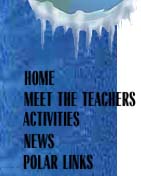
The gas chromatograph that we operated almost 24 hours a day.
(Harris)
|

A birds-eye view of Commonwealth Glacier
in the Taylor Valley. We hiked up to the glacier,
taking soil and rock samples for analysis.
(Harris)
|

At Snow School. Sharon Harris cutting ice
blocks for the construction of a wind fall.
(Harris)
|
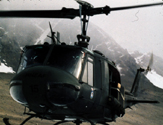
Dr. Mark Wells attaches a sling load to a
Kiwi transport helicopter. This was one of the those
"other duties as assigned" things!
(Harris)
|
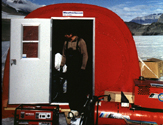
The weather haven on Lake Bonney. Inside the
weather haven a hole had been drilled through the ice.
We set up our sampling equipment and
on-site meters inside the haven. Protected from the
elements, the weather haven provided a nice,
warm working environment. Dr. Mark Wells
inspects one of the pumps that we used.
(Harris)
|

The meter wide hole drilled through 4 meters
of ice at Lake Bonney. We dropped a pre-measured length
of tubing into this hole and collected water
samples from various depths. We also tested oxygen
levels, temperature and salinity.
(Harris)
|
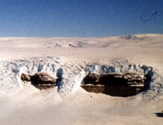
Airdevronsix Ice Falls in Upper Wright Valley.
(Harris)
|
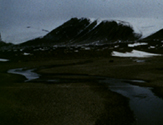
Onyx River in Taylor Vallery, the only surface river
in Antarctica. Onyx River flows during spring and summer
from melt waters in the Lower Taylor Valley.
The river is only centimeters deep
and could easily be straddled.
(Harris)
|
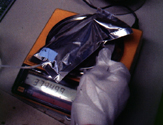
Weighing one of our sampling bags filled
with water from Lake Bonney. Each bag was incubated
with acetylene and a variety of other substances.
After a 24 hour incubations, gases were removed
from the bags and tested for
the presence of nitrous oxide.
(Harris)
|

Taylor Glacier at the west end of Lake Bonney.
(Harris)
|

A view of the labyrinth in Wright Valley.
(Harris)
|
